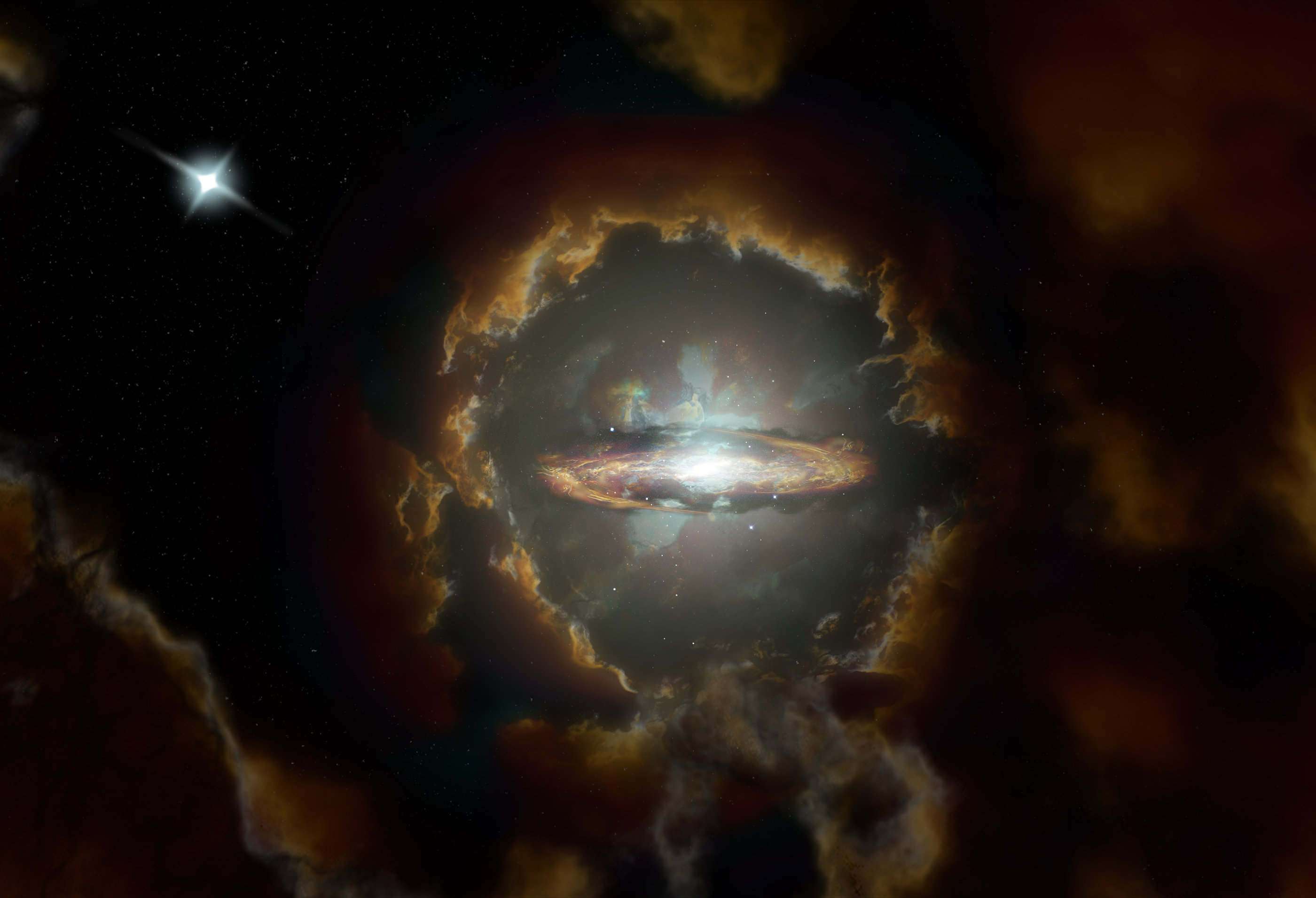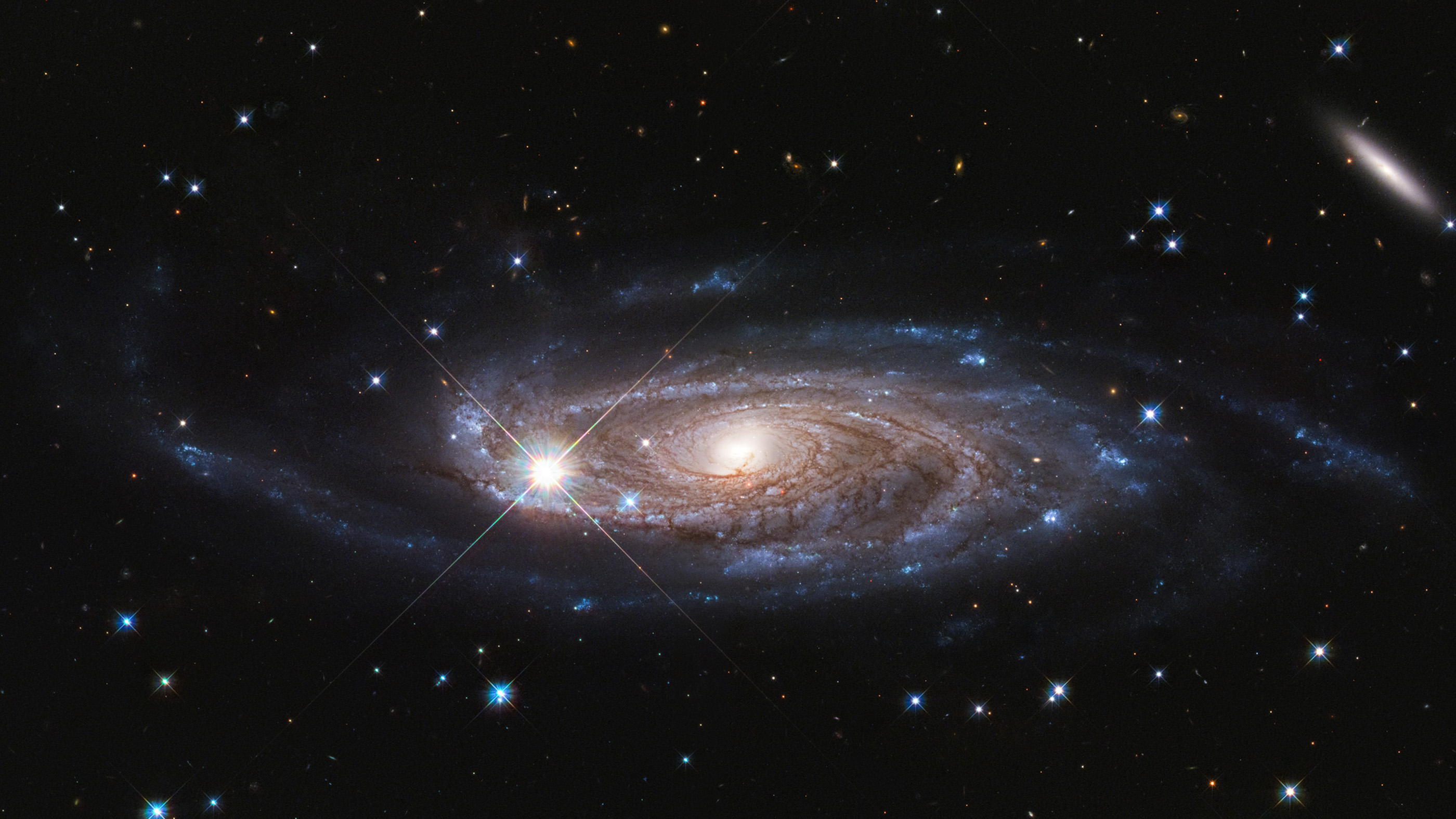How a weird theory of gravity could break cause-and-effect

Astronomers have known that galaxies across the universe are behaving badly. Some are spinning too fast, while others are just way too hot and still others glommed into super structures too quickly.
But they don't know why. Perhaps some new hidden particle, like dark matter, could explain the weirdness. Or perhaps gravity is acting on these coalescing clusters of stars in a way scientists hadn't expected.
For decades, astronomers have debated the possibilities. While most astronomers believe that dark matter exists, some still think that we need to modify our theory of gravity. However, new research has found a critical flaw in modified gravity theories: They allow for effects to occur without causes and for information to travel faster than the speed of light. This is bad … for modified gravity.
Related: The 15 weirdest galaxies in our universe
"It may change this … research area considerably, forcing it in rather new directions," lead researcher and Tufts University astrophysicist Mark Hertzberg told Live Science.
Cold, but not too cold
Something funny is going on in the universe. For instance, based on what scientists would predict based on the masses of galaxies, stars orbit around the centers of them far too quickly; the temperature of the gas inside of galaxy clusters is far too hot; and large structures appeared in our universe far too soon.
At galactic and cosmological scales, either astronomers' understanding of the force of gravity is totally off, or there's a new ingredient in our universe that exerts gravity but is otherwise invisible. The latter idea is known as cold dark matter (CDM), which is the name given to a hypothetical form of matter that is as yet unknown to physics. The "cold" is there to note that whatever exotic particle might be responsible for the dark matter, it moves relatively slowly, in contrast to other potential dark matter candidates like the neutrino — an example of a candidate for hot dark matter particles.
Sign up for the Live Science daily newsletter now
Get the world’s most fascinating discoveries delivered straight to your inbox.
Related: The 11 biggest unanswered questions about dark matter
"If one gives up the principles of causality and locality, then it means we are essentially unable to explain the structure of the Standard Model of Particle Physics and General Relativity."
Mark Hertzberg, Tufts University
By filling galaxies with a form of matter that is invisible to light, the CDM hypothesis is wildly successful at explaining the majority of observations of galaxies and the larger universe. It is by far the most commonly accepted explanation for why the universe behaves as it does.
But the CDM hypothesis isn't perfect. Whatever it is, it sits outside the Standard Model of particle physics, meaning we have no idea what it is. Also, it has difficulty explaining something called the Baryonic Tully-Fisher Relation. The observed relationship shows that the total mass of normal matter, called baryonic matter, of a galaxy is proportional to the fourth power of the rotation speed. But CDM models predict that the relationship should be to the third power, predicting that galaxies spin slower for a certain amount of mass than they actually do.
What else could be going on?

Tout le MOND
An alternative to the whole CDM idea is a modified understanding of gravity. The simplest models fall under a class called MOND, for Modified Newtonian Dynamics. These models replace Newtonian physics (think Force = mass x acceleration) with other relationships that match the observed rotation rate of stars inside galaxies. While these models were popular when dark matter was first discovered in the 1970s and 1980s, they have failed to account for observations of galaxy clusters and the larger universe; as such, most scientists have all but rejected these models.
But the inadequacies of CDM to explain internal galactic dynamics provide an opening for MOND to survive. If a "MONDian" theory wants to compete on the galactic stage, however, it must be compatible with our other theories of physics, such as the special theory of relativity and quantum mechanics. So that's exactly what Hertzberg and his team set out to do. The results of their study were published in May to the preprint database arXiv, so the study hasn't been peer-reviewed.
"The only possibility to obtain something new [within the framework of relativity and quantum mechanics] is to add new degrees of freedom," Hertzberg told Live Science. In other words, in order to get MONDian theories to work with known physics, you have to add a whole bunch of funky stuff to theories. In examining that funky stuff, Hertzberg and collaborators Jacob Litterer and Neil Shah found "some theoretical problems lurking in these attempts."
Local and causal
For instance, Hertzberg and his collaborators examined whether MONDian theories protect two principles: locality and causality. Locality is the concept that objects are directly influenced only by their surroundings — in order for one object to influence another, it must transmit that influence via something like a force that travels at a finite speed. Causality is the simple notion that all events have a cause.
If a theory violates locality and/or causality, it is unlikely to fit in with our theories of physics, which do protect both principles
"If one gives up the principles of causality and locality, then it means we are essentially unable to explain the structure of the Standard Model of Particle Physics and General Relativity, as they are some of the central principles that go into constructing these theories in the first place," Hertzberg said. "In other words, if causality were badly broken in nature, we likely would have seen it already in various corrections to particle physics in the lab or tests of gravity in space."
In other words, we should've noticed by now.
Since all available evidence indicates that locality and causality are preserved (at least at macroscopic scales), then they should be obeyed by any new theory of physics. The team of physicists put MONDian theories to the test and found that they contain features that allow for non-locality and acausality. In other words, if MONDian theories are correct, then it's possible for events to happen without a cause and for effects to travel instantaneously, which violates the speed-of-light limit in the universe.
"Since we found that the existing proposals for radically new dark matter and MOND-like theories have some form of acausality, then it suggests they may not be embedded into fundamental physics, at least in their present form," Hertzberg said.
The end of MOND?
It might indeed be possible for locality and causality to be violated on galactic scales, but this would be extremely difficult to reconcile with everything else we know about physics.
As to the future of MONDian theories, Hertzberg speculated, "it motivates attempts to try to construct some classes of similar models that somehow maintain causality, but this looks difficult to achieve. In our paper, we show that a generalized form of these models fails the above tests for consistency."
Still, the "cold dark matter" paradigm has difficulty explaining the details of galactic physics. But there could be far more mundane reasons for this rather than upending all known physics. Modeling how galaxies form and evolve, even just accounting for all the messy processes where normal matter plays a role, is very difficult. Perhaps, a more sophisticated understanding of galaxies will provide an explanation for the observed Baryonic Tully-Fisher Relation.
And CDM is by far the best explanation we have.
"What is great about CDM is that it is theoretically on firm ground, and passes all the above theoretical consistency tests, even though it is not part of the Standard Model of Particle Physics," Hertzberg said. "The reason I say it is on firm ground is that there is no known theoretical reason why there shouldn't be some stable, neutral particles out there in the universe that don't couple to us very much. So CDM is reinforced, for now, as the leading idea."
Next, the team will look at models that try to combine both the successes of cold dark matter and MONDian dynamics, Hertzberg said.
Originally published on Live Science.
Editor's note: This article was updated to include Hertzberg's collaborators.

Paul M. Sutter is a research professor in astrophysics at SUNY Stony Brook University and the Flatiron Institute in New York City. He regularly appears on TV and podcasts, including "Ask a Spaceman." He is the author of two books, "Your Place in the Universe" and "How to Die in Space," and is a regular contributor to Space.com, Live Science, and more. Paul received his PhD in Physics from the University of Illinois at Urbana-Champaign in 2011, and spent three years at the Paris Institute of Astrophysics, followed by a research fellowship in Trieste, Italy.









